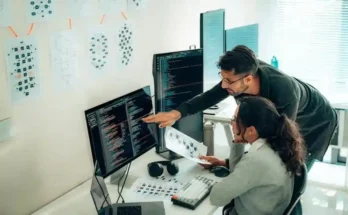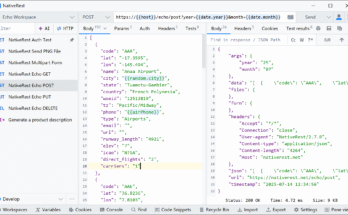In November 1966, floods in Florence, Italy, damaged 1,400 pieces of art that were repaired, including Cimabue’s book The Crucifixion. Apart from traditional art, new forms of art have emerged – digital art collections in NFTs art and virtual reality (VR) and advanced art similar to Estelle Tse’s VR taken from Rembrandt’s VR V The Night Watch. Every piece of art – traditional or digital – has the same transformation – how did you protect and preserve the art of future generations?
According to Nicole Bouchard Tejeiro, Executive Director of Product and Technology Strategy at Crozier Europe, part of the Iron Mountain business, emerging technologies play a key role in protecting some of the world’s most valuable works of art.
Tejeiro cites colleagues such as Vancouver-based Arius based on a focus on ensuring the true preservation of fine art as an example of specialty in technological preservation.
“Solutions such as ultra-high-resolution 3D scanning [..] are used to store, transmit and digitize critical drawings and open up new audiences to enjoy,” Tejeiro said.
Emerging trends in art and technology
3D laser scanning
MUCH FOR YOU
Google Issues Warning to 2 Million Chrome Users
Forget the MacBook Pro, Apple Has Bigger Apps
Google Pixel 6, Nest & Pixel Buds Discounts At Limited Time Sales
Tejeiro believes that specialized 3D laser scanning helps galleries and auction houses improve consumer knowledge online.
“Art vendors continue to need to provide sophisticated online information and collaborative images are essential in conveying rich artistic details,” added Tejeiro. “Special 3D color laser scanning provides deep, high-resolution information, giving collectors peace of mind – even from distant objects.”
Artificial intelligence
AI continues to innovate between technology and art.
In October 2021, New York-based artist Anicka Yi opened a new exhibition at Tate Modern at Turbine Hall as part of the Hyundai Commission showcasing the ecosystem of equipment and exploring the link between art and science. Collaborating with Sitara Systems to implement artificial intelligence technology (AI), an exhibition entitled Anicka Yi: In love With the World incorporates a living ecosystem of aerobes – independent flying machines. The aerobes were self-directed and used their visual intelligence created in Sitara’s AI to communicate with visitors.
In a statement, Yi said he hopes that by increasing our perceptions of intelligence, friendship, and [..] health itself, we can achieve new forms of compassion, empathy and international knowledge.
Data
According to Tejeiro, ultra-high-resolution laser scanning data quickly becomes the gold standard in diagnosing the condition. “The [..] 3D mapping and digitization process that Arius can provide reveals micron-level details and color that are invisible to the human eye.
“The data generated is also timed to form a benchmark for future analysis reports, to help monitor even the first signs of deterioration,” adds Tejeiro.
Monet at Canada’s National Gallery, which showed signs of invisible oxidation in the human eye, used Arius’ technology in its digital recovery.
Visual technology
“The latest visual aids can be used to verify the original work of art, authenticity and travel, by mapping the color values of all the above points into one-tenth of human hair,” said Simon Hornby, SVP & General Manager, Crozier Europe. “These records can also be used to accurately calculate current and future art costs – for inspectors, collectors and insurance brokers.”
High-resolution scanning
According to Hornby, written repetition preserves valuable cultural assets and makes the art accessible to a wider audience. “Many works of art are too fragile or important to be displayed and need to be stored in a climate-controlled, secure environment.”
“We are using advanced Arius scanning technology to produce high-fidelity recordings, which capture the artist’s geometry and color up to two inches deep,” added Hornby.
Crozier has partnered with Tate Britain to create major digital art files for museum exhibitions and not for exhibitions. “Our rich data sets are also used for written reproduction, conservation projects and digital restoration, including J. M. W Turner’s Peace-Burial at Sea.”
Blockchain
Hornby says the data generated by ultra-high-resolution scanning technology helps to create digital trading in the arts.
“Conservation quality image data can be tagged in the blockchain. The scanner links this data to the visual clip and any traditional objects associated with that function,” Hornby said.



